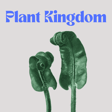
11 Sharon Robinson: Antarctic moss
Climate change biologist Dr Sharon Robinson takes us thousands of kilometres across the Southern Ocean to Casey Station, Antarctica. She is an expert on Antarctica’s ancient moss beds, which she describes as ‘miniature old growth forests’. In our conversation, we spoke about the adaptations that enable moss to thrive in some of the harshest environments on earth, and the impact of historic ozone depletion and climate change on these fragile ecosystems.
Bio:
Dr Sharon Robinson is a Climate Change Biologist at the University of Wollongong, Australia. An expert on Antarctic moss, she first visited East Antarctica in 1996 and has been on 12 expeditions to Antarctica with the Australian and Chilean National Antarctic Programs. Her research characterizes the impact of anthropogenic change including ozone depletion and climate change on fragile moss ecosystems. She is a member and lead author of the UN Environment Programme, Environmental Effects Assessment Panel; and a Faculty Member of Homeward Bound, helping to create a global network of women with a background in STEMM leading and solving our world’s greatest challenges. She is a 2024 Australian Laureate Fellow and Deputy Director of Securing Antarctica’s Environmental Future.
Plant Kingdom is hosted and produced by Catherine Polcz with music by Carl Didur.


